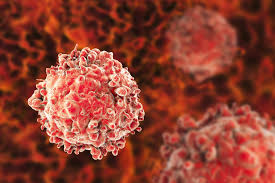
Governor Oluwarotimi Akeredolu of Ondo State is dead. He died at the age of 67.
The news of his death emerged on Wednesday morning.
The Governor, who was a Senior Advocate of Nigeria and former President of the Nigerian Bar Association, died after a protracted battle with an undisclosed illness, though reports said he was battling leukaemia.
What is leukaemia?
The term leukaemia comes from the Greek words for “white” (leukos) and “blood” (haima).
According to the Cleveland Clinic, leukaemia is a cancer of the blood, characterised by the rapid growth of abnormal blood cells. This uncontrolled growth takes place in the bone marrow where most of the body’s blood is made.
Leukaemia cells are usually immature (still developing) white blood cells.
Unlike other cancers, leukaemia doesn’t generally form a mass (tumor) that shows up in imaging tests, such as X-rays or CT scans.
How leukaemia develops
Leukaemia begins in the bone marrow, the soft spongy tissue in the inner cavity of the bones, where the body’s blood cells are made. Blood cells go through multiple stages before reaching their fully mature forms.
However, if you have leukaemia, one of the developing blood cells begins to multiply out of control. These abnormal cells — called leukaemia cells — begin to take over the space inside of your bone marrow. They crowd out the cells trying to develop into healthy red blood cells, white blood cells and platelets.
How leukaemia affects the body
Having too many leukaemia cells and too few normal cells is harmful because leukaemia cells serve no purpose in keeping you healthy.
Normal blood cells have very little space and support to mature and multiply inside your bone marrow because the leukaemia cells overtake them.
Fewer red blood cells, healthy white blood cells and platelets are made and released into your blood. As a result, your body’s organs and tissues won’t get the oxygen needed to work properly. Also, your body won’t be able to fight infections or form blood clots when needed.
Types of leukaemia
There are four main types of leukaemia:
Acute lymphocytic leukaemia is the most common type of leukaemia in children, teens and young adults up to age 39. All can affect adults of any age.
Acute myelogenous leukaemia is the most common type of acute leukaemia in adults. It’s more common in older adults (those over 65). AML also occurs in children.
Chronic lymphocytic leukaemia is the most common chronic leukaemia in adults (most common in people over 65). Symptoms may not appear for several years with CLL.
Chronic myelogenous leukaemia is more common in older adults (most common in people over 65) but can affect adults of any age. It rarely occurs in children. Symptoms may not appear for several years with CML.
How common is leukaemia?
According to the National Library of Medicine, leukaemia is the 10th most common cancer in the world, accounting for 3.2 per cent of all new cancer cases. Leukaemia can affect anyone, but it’s more common among people who are 45 to 65 years old.
Causes
Leukemia starts when the DNA of a single cell in the bone marrow changes (mutates).
DNA is the “instruction code” that tells a cell when to grow, how to develop and when to die. Due to the mutation or coding error, leukaemia cells keep multiplying. All cells arising from the original mutated cell also have the mutated DNA.
Scientists don’t know what causes these developing cells to mutate. However, they have been able to identify some common mutations that people diagnosed with different types of leukaemia share.
Symptoms
Symptoms depend, in part, on the type of leukaemia. For instance, if someone has a chronic form of leukaemia, they may not have noticeable symptoms in the early stages.
However, common signs and symptoms of leukaemia include fatigue, getting tired easily, fever or night sweats, frequent infections, shortness of breath, pale skin, unexplained weight loss, bone/joint pain or tenderness, pain or full feeling under your ribs on the left side, swollen lymph nodes in your neck, underarm, groin or stomach, an enlarged spleen or liver.
There can also be bruising and bleeding easily, including nosebleeds, bleeding gums, a rash that looks like tiny red spots in the skin (petechiae) or purplish/darkened skin patches.
Diagnosis
Results from routine blood work can alert your healthcare provider that you may have an acute or chronic form of leukaemia that requires further testing, or they may recommend a workup if you have leukaemia symptoms.
Treatment
Treatment for leukaemia depends on the type of leukaemia, age the person’s overall health, and if the leukaemia has spread to other organs or tissues.
Common treatments often include a combination of the following: chemotherapy, immunotherapy (biologic therapy), targeted therapy, radiation therapy, and hematopoietic cell transplant.
For Advert, Event Coverage, Story/Article Publication, Change Of Name & Placement In Newspapers, PR & Other Media Services
Contact Us On: WhatsApp
Send Email To: citizennewsng@gmail.com
Visit Citizen NewsNG To Read More Latest And Interesting News












